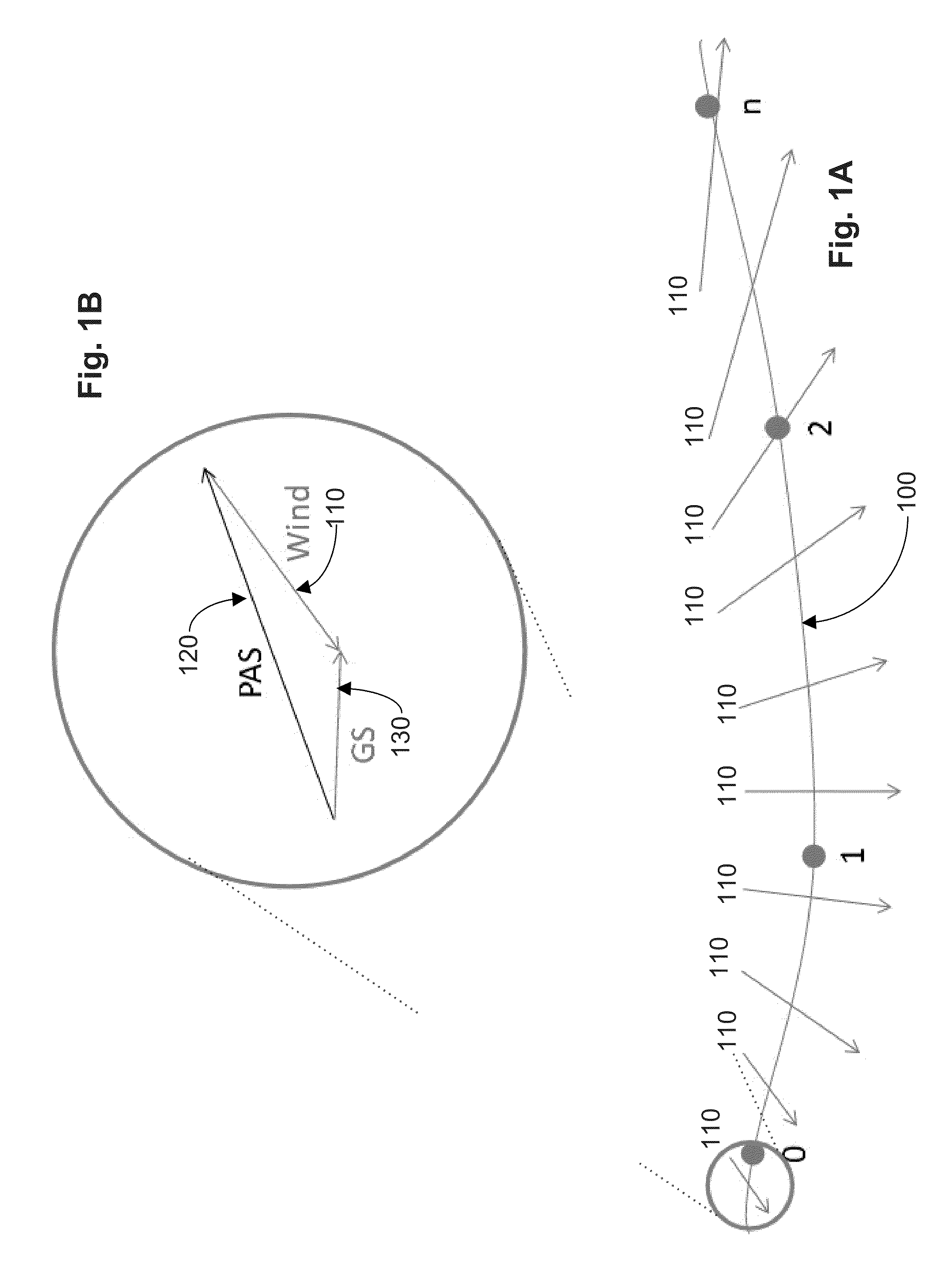Systems and methods providing a fuel-efficient rta implementation with uncertain winds
a technology of uncertain wind and flight management system, applied in the field of flight management system and control method, can solve the problems of increased fuel burn, emissions, missed rta assignments, and increased fuel burn, and achieve the effect of improving conformity and reducing the amount of required fuel burn
- Summary
- Abstract
- Description
- Claims
- Application Information
AI Technical Summary
Benefits of technology
Problems solved by technology
Method used
Image
Examples
example implementations
[0146
[0147]For an aircraft at cruise, there can exist a planned route through the airspace, a forecast of the winds expected along the route, and a measure of the wind speeds at current and past locations. This information can provide forecast uncertainty information that can be characterized as an error state—for example, the difference between the winds currently encountered and the winds expected to be encountered from a source of forecast data such as the RUC-2 forecast product. This state can then change as a function of position along the planned route as different regions of airspace are traversed. In conventional studies, it was assumed that this state evolved based on a variety of correlation schemes, none of which modeled the real-world behavior of the RUC-2 forecast product.
[0148]However, in some implementations of the disclosed technology, a model can be generated on a per-route basis that captures the inherent structure of a source of forecast data by, for example, exam...
PUM
 Login to View More
Login to View More Abstract
Description
Claims
Application Information
 Login to View More
Login to View More - R&D
- Intellectual Property
- Life Sciences
- Materials
- Tech Scout
- Unparalleled Data Quality
- Higher Quality Content
- 60% Fewer Hallucinations
Browse by: Latest US Patents, China's latest patents, Technical Efficacy Thesaurus, Application Domain, Technology Topic, Popular Technical Reports.
© 2025 PatSnap. All rights reserved.Legal|Privacy policy|Modern Slavery Act Transparency Statement|Sitemap|About US| Contact US: help@patsnap.com



